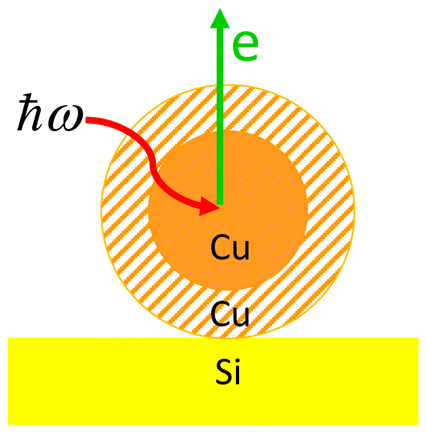当前位置:
X-MOL 学术
›
J. Phys. Chem. C
›
论文详情
Our official English website, www.x-mol.net, welcomes your feedback! (Note: you will need to create a separate account there.)
Evaluation of Two Methods for Determining Shell Thicknesses of Core–Shell Nanoparticles by X-ray Photoelectron Spectroscopy
The Journal of Physical Chemistry C ( IF 3.3 ) Pub Date : 2016-09-27 00:00:00 , DOI: 10.1021/acs.jpcc.6b07588 C. J. Powell 1 , W. S. M. Werner 2 , A. G. Shard 3 , D. G. Castner 4
The Journal of Physical Chemistry C ( IF 3.3 ) Pub Date : 2016-09-27 00:00:00 , DOI: 10.1021/acs.jpcc.6b07588 C. J. Powell 1 , W. S. M. Werner 2 , A. G. Shard 3 , D. G. Castner 4
Affiliation

|
We evaluated two methods for determining shell thicknesses of core–shell nanoparticles (NPs) by X-ray photoelectron spectroscopy. One of these methods had been developed for determining thicknesses of films on a planar substrate while the other was developed specifically for NPs. Our evaluations were based on simulated Cu 2p3/2 spectra from Cu-core/Cu-shell NPs with a wide range of core diameters and shell thicknesses. Copper was chosen for our tests because elastic-scattering effects for Cu 2p3/2 photoelectrons excited by Al Kα X-rays are known to be strong. Elastic scattering could also be switched off in our simulations so that the two methods could be evaluated in the limit of no elastic scattering. We found that the first method, based on both core and shell photoelectron intensities, was unsatisfactory for all conditions. The second method, based on an empirical equation for NPs developed by Shard, also utilized both core and shell photoelectron intensities and was found to be satisfactory for all conditions. The average deviation between shell thicknesses derived from the Shard equation and the true values was −4.1% when elastic scattering was switched on and −2.2% when elastic scattering was switched off. If elastic scattering was switched on, the effective attenuation length for a Cu film on a planar substrate was the appropriate length parameter while the inelastic mean free path was the appropriate parameter when elastic scattering was switched off.
中文翻译:

X射线光电子能谱法测定核壳纳米粒子壳厚度的两种方法的评价
我们评估了两种通过X射线光电子能谱确定核壳纳米颗粒(NPs)壳厚度的方法。已经开发出这些方法中的一种用于确定平面基板上膜的厚度,而另一种专门用于NPs。我们的评估基于铜核/铜壳NP的模拟Cu 2p 3/2光谱,具有宽范围的核直径和壳厚度。选择铜用于我们的测试是因为Cu 2p 3/2具有弹性散射效应已知由AlKαX射线激发的光电子很强。在我们的模拟中也可以关闭弹性散射,以便可以在没有弹性散射的范围内评估这两种方法。我们发现基于核和壳光电子强度的第一种方法在所有条件下都不令人满意。第二种方法基于由Shard开发的NPs的经验公式,还利用了核和壳的光电子强度,发现对于所有条件都令人满意。由Shard方程得出的壳厚度与真实值之间的平均偏差在打开弹性散射时为-4.1%,在关闭弹性散射时为-2.2%。如果启用了弹性散射,
更新日期:2016-09-27
中文翻译:

X射线光电子能谱法测定核壳纳米粒子壳厚度的两种方法的评价
我们评估了两种通过X射线光电子能谱确定核壳纳米颗粒(NPs)壳厚度的方法。已经开发出这些方法中的一种用于确定平面基板上膜的厚度,而另一种专门用于NPs。我们的评估基于铜核/铜壳NP的模拟Cu 2p 3/2光谱,具有宽范围的核直径和壳厚度。选择铜用于我们的测试是因为Cu 2p 3/2具有弹性散射效应已知由AlKαX射线激发的光电子很强。在我们的模拟中也可以关闭弹性散射,以便可以在没有弹性散射的范围内评估这两种方法。我们发现基于核和壳光电子强度的第一种方法在所有条件下都不令人满意。第二种方法基于由Shard开发的NPs的经验公式,还利用了核和壳的光电子强度,发现对于所有条件都令人满意。由Shard方程得出的壳厚度与真实值之间的平均偏差在打开弹性散射时为-4.1%,在关闭弹性散射时为-2.2%。如果启用了弹性散射,











































 京公网安备 11010802027423号
京公网安备 11010802027423号